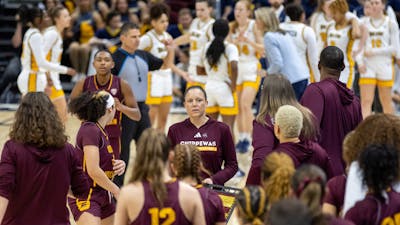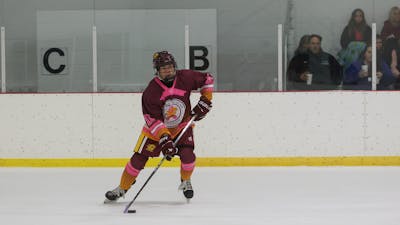The art of making weight: Wrestlers balance diet, workouts to hit designated weights
Everything that goes into the body of Central Michigan wrestlers is strategically designed to get the best results.
Wrestling has 10 different weight classes ranging from 125 pounds to heavyweight. Wrestlers can go under the designated weight, but not over in order to compete in the class. This requires wrestlers to constantly track their weight.
Wrestling is a test of the athlete's body. It requires stamina, agility, flexibility and power to overpower an opponent.
"(Wrestling) is mandated by weight. We have to keep them within a certain range to make weight,” said Taylor Larson, the assistant director of strength and conditioning at CMU. “You are physically grappling with somebody and trying to overpower them to get points. It’s probably the closest sport (to compare) to combat in college athletics."
Larson has been with the Athletics Department since 2009 and is primarily responsible for the wrestling team. He gives the wrestlers nutritional advice, designs their workouts and monitors their physical health overall.
Eating the right way
What a wrestler eats is essential to performance on the mat. A wrestler's diet mostly includes chicken, eggs, oats, vegetables and fruit.
Larson is a believer in healthy nutrition. He constantly reminds the wrestlers of the importance of good eating habits.
“I always tell the guys, ‘What you put into your body is what you’re going to get out of it,'" Larson said.
Larson is not part of the coaching staff. He is not able to travel with the team for away meets. This poses a challenge because wrestlers are weighed before each match and need to be at expected weight.
Larson says the team knows which foods they’re supposed to eat and how those foods will benefit them in competition.
“I like to keep our guys on fresh fruits, vegetables, some type of protein source,” Larson said. “The food is going to help decide how well you weight manage and how well you participate in the event.”
Redshirt freshman and 197-pound wrestler Tyrus Kemp has been wrestling since high school. He has been practicing these habits for many years. He believes it’s important to know when your body has had enough to eat — to prevent from overeating.
“I think the biggest thing is feeling satisfied and not full,” Kemp said. “If I stuff my face and I’m feeling full, I know I’m going to gain weight.”
The days leading up to a meet are the most important for making sure you’re at your target weight. Kemp says he tries to limit his carbohydrate intake on those days and replace carbs with healthier alternatives.
“I try to cut back on carbs. I eat a lot more green vegetables — something that fills you up — and I soak those in olive oil. I try to cut my calories in half,” Kemp said.
Working Out
While eating healthy is very important for a wrestler, it means little if they’re not hitting the gym.
The Central Michigan wrestling team workouts at least three days a week, not involving what they do at practice.
The workouts consist of full body exercises, but each day usually has a primary focus. One day focuses on posterior exercises, while the second will focus on lower body, and the last will focus on single body movements.
Each workout is designed to help with a certain movement on the mat.
“For them to have a successful shot at a takedown may depend on if you can grip them or not,” Larson said. “You’re going against somebody else, so to give yourself a competitive edge, you either need to be stronger, more explosive, exploit their weaknesses as well as work to your strengths.”
Larson knows he has to be careful he doesn’t overwork his wrestlers. He has to work around their matches and make sure the days before and after they aren’t lifting too much.
“My guys that are redshirting can handle full weight all the time because they aren’t wrestling this year. The guys that wrestled the night before are gassed from their match, so we will do a supplemental lift,” Larson said. “So instead of doing a front squat, we will grab a dumbbell and do a goblin squat. We’re helping these guys maintain some strength, but more importantly we are helping them recover.”
No matter if they are squatting, deadlifting or bench pressing, each exercise is part of a program that is predicated on success.
“We do some Olympic lifting. We do some powerlifting. But at the end of the day, these kids are wrestlers. Each thing we do in the weight room is a stepping stone to March, when the NCAA tournament is.”






